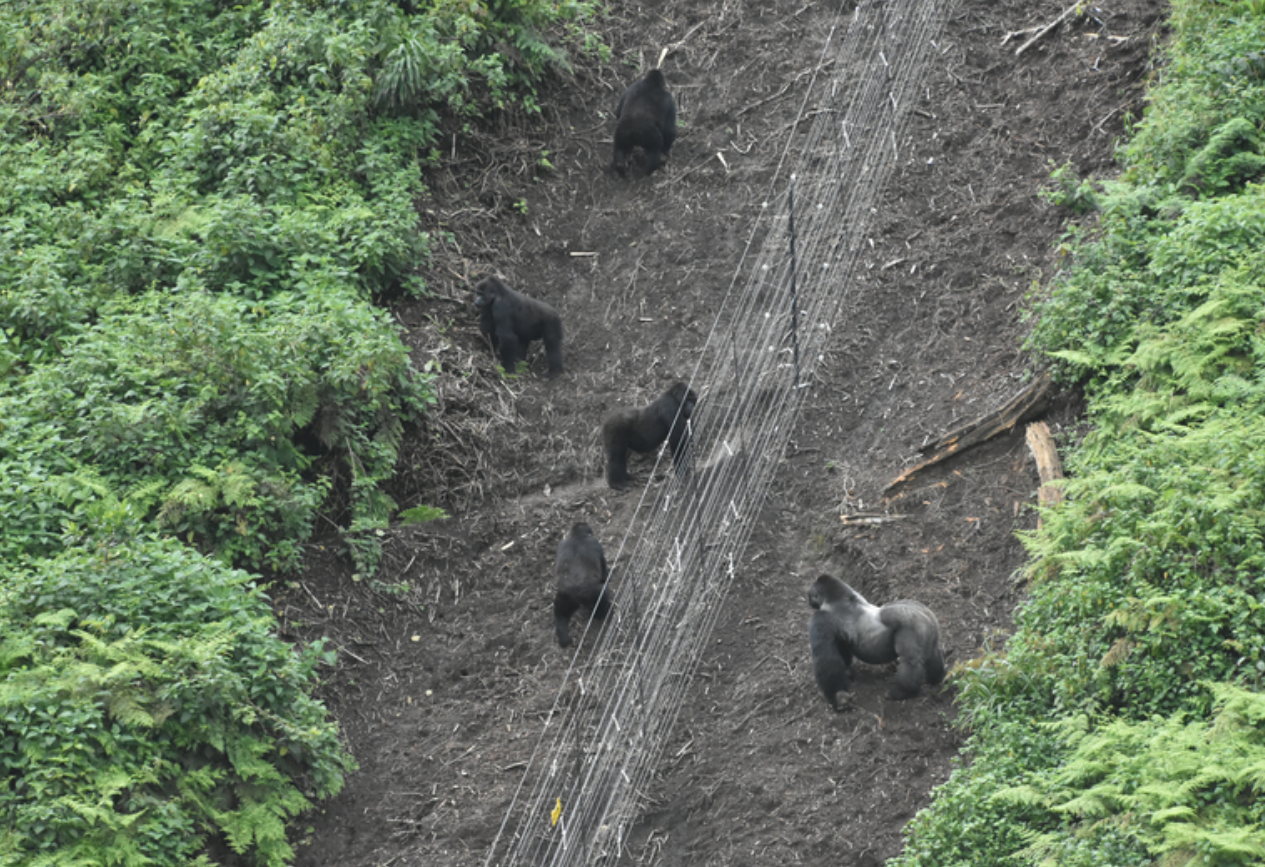Four gorillas that were rescued from poachers have been reintroduced to the Virunga National Park in the lush mountains of the Democratic Republic of the Congo (DRC).
After a few years of rehabilitation, the critically endangered female eastern lowland gorillas — named Mapendo, Ndjingala, Isangi, and Lulingu — have been moved to Mt. Tshiaberimu. This place means the “mountain of the spirits” in the native language due to stories from the Indigenous Baswagha clan about dark-haired spirit animals dwelling deep within its forests.
It’s hoped the move could prevent the region’s small gorilla population from vanishing entirely, boosting their numbers from just eight to 12 and increasing the chances of successful reproduction in the future.
Bringing gorillas back into their natural habitat is no easy feat. It requires patience, science, and a deep understanding of their behavior and health. The move is the latest step in a five-year rewilding process led by the Gorilla Rehabilitation and Conservation Education Center (GRACE), Virunga National Park, and local communities, with support from Gorilla Doctors and Re:wild. In total, more than 400 people contributed to making it possible.
“We’ve been caring for these gorillas since they were babies. Our ultimate goal has been to help them recover from the trauma of the illegal wildlife trade and the circumstances that followed, and get them back to the wild,” Jackson Kabuyaya Mbeke, DRC director for GRACE Gorillas, said in a statement sent to IFLScience.
“These gorillas are extremely resilient and they have spent a decade, or more in some cases, learning how to forage, nest-build, and make appropriate decisions in a social group. When we were deciding which gorillas would be the best candidates for reintroduction, it was very clear that these four females could help contribute to the survival of their species in the wild,” he added.
All four were rescued from the clutches of poachers and the illegal wildlife trade as young ’uns. They found refuge at the GRACE sanctuary, where they spent years in a protected, 16-hectare (39-acre) forest environment.
There, they learned the skills they would need to survive in the wild under the watchful eye of caretakers. After years of rehabilitation, the team was confident they had started to show the necessary signs of good health, social behaviors, and the potential to reproduce.
They were airlifted via helicopter to a cordoned-off area of Mt. Tshiaberimu. The team wanted the gorillas to take their time as the location is at a higher altitude and a cooler temperature than their previous home.

A wild silverback gorilla named Mwasa began visiting the four females at the fence line before the group were set into the wild.
Image courtesy of GRACE
But promising signs quickly emerged. In late November 2024, a wild silverback gorilla named Mwasa began visiting the four females at the fence line, sparking natural and positive interactions. Within the following weeks, the four females left the rewilding facility on Mt. Tshiaberimu and ventured into the surrounding forest.
“The gorillas surprised us by how quickly they wanted to leave the enclosure to go into the forest,” said Benoit Ishaba, head of gorilla monitoring on Mt. Tshiaberimu and a ranger at Virunga National Park.
“They wanted to be with the silverback and they immediately started learning from him. Within three days, they were eating plants that grow at higher altitudes that they had never eaten before, such as bamboo leaves and bamboo shoots. Now, they eat more species of plants than any gorillas on Mt. Tshiaberimu, and they appear healthy,” added Ishaba.
So far, so good. The initial reintroduction of the gorillas seems to be a success. However, the path forward remains uncertain and full of challenges.
Even so, this effort could serve as a valuable model for other rewilding projects involving eastern lowland gorillas, which are urgently needed given the dwindling fortunes of the species.
“Eastern lowland gorillas are critically endangered and need conservation efforts that fully engage and support local communities. This reintroduction offers a powerful example of what’s possible when such efforts are thoughtfully designed and implemented,” explained Dirck Byler, ape conservation director of Re:wild.
Source Link: Four Gorillas Rescued From Illegal Wildlife Trade Have Been Rewilded In The DRC